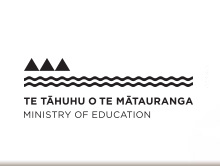Pākanae (wh. 21–25)
He whakarāpopoto
I te atapō, ka tatū mai a Uenuku-kuare ki te pā o tōna pāpā. Ka pātai mai a Rāhiri, “Ko wai koe?” I reira ka whakatakotoria e Uenuku-kuare tōna whakapapa. Nō te mōhiotanga a Rāhiri nāna te tamaiti ka tau te mauri ki te pā nei. Engari ka riri a Kaharau ki tana tuakana ki a Uenuku-kuare.
Summary
Uenuku-kuare reaches his father’s pā just before dawn. Rāhiri arrives and asks, “Who are you?” Then Uenuku-kuare gives his whakapapa. Once Rāhiri knows this child is his, things in the pā settle down. But Kaharau is angry with his older half-brother Uenuku-kuare.
| Te momo reo tuhi Language style |
|
|---|---|
| Ētahi āhuatanga o tēnei momo reo tuhi Features of this language style |
|
I te Ākonga e Pānui ana i te Pukapuka
During Reading
He Ngohe
Anei ētahi whakaaro mō ētahi ngohe e hāngai ana ki ngā kōrero katoa o roto o Whakawhiti 33, Tūhoronuku.Ka taea e te pouako ēnei te whakamahi kia tutuki ai ngā whāinga whakaako me ngā whāinga ako. Ka taea anō e ia te rāwekeweke ēnei whakaaro kia hāngai ake ki ngā whāinga ako me ngā hiahia o ngā ākonga.
Learning Activities
Here are some ideas for learning activities aligned with the writing in Whakawhiti 33, Tūhoronuku. Pouako can use these to help achieve their teaching and learning objectives. These ideas can be adapted to align with the learning objectives and needs of the students.
1. Pānuihia te kōrero, kātahi tautohua ngā rerenga kōrero hei reo raupapa.
Read the story, and then identify expressions that order ideas or events in sequence.
2. He mahi takirua tēnei. Mā ngā ākonga e tuhi ā rātou ake kōrero whakawhiti. Me tīmata ki ngā rerenga nei: “E tū! Ko wai koe?”
This activity can be done in pairs. Students write their own dialogue. Start with the sentences: “E tū! Ko wai koe?”
3. Mahi takirua. Mā ia ākonga e whakarite pātai kia riro i a ia ngā kōrero e pā ana ki tōna hoa.
Work in pairs. Each student prepares questions so they can gain information about their friend.



